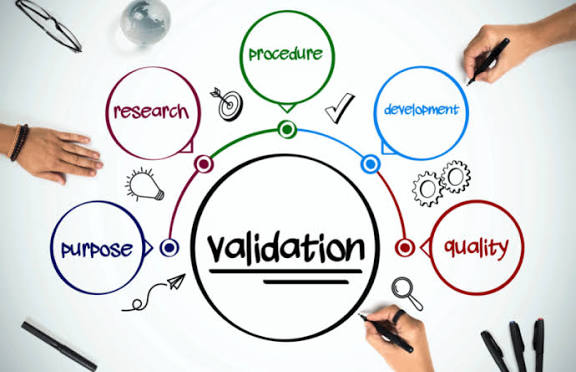Understanding Product Validation
Product validation is a crucial process within the product development lifecycle that ensures a product meets market needs and user expectations before it is fully launched. It encompasses various methods and techniques designed to ascertain whether a product idea holds value and addresses specific user problems. At its core, product validation helps to validate and refine concepts, minimizing the risks associated with product failures and ensuring alignment with market demands.
One of the primary elements of effective product validation is comprehensive market research. This entails assessing the competitive landscape, understanding customer demographics, and identifying gaps within the existing market offerings. By gathering qualitative and quantitative data, product teams can make informed decisions that directly influence the viability of their product ideas. Moreover, user feedback plays a pivotal role in shaping product development. Engaging potential users early through surveys, interviews, and focus groups enables teams to gather insights that can inform design improvements and feature prioritization.
Another important aspect of product validation is the iterative testing of concepts. Rather than developing a product in isolation, teams should employ techniques such as prototyping and minimum viable product (MVP) approaches. These methodologies allow for real-world testing of the core features and concepts with a targeted audience. By conducting usability tests and collecting data on user interactions, teams can identify issues and pivot accordingly, reducing the risk of costly missteps during full-scale development.
The significance of validating ideas before embarking on extensive product development cannot be overstated. It allows organizations to make strategic decisions based on tangible evidence rather than assumptions, ultimately leading to products that resonate with the intended audience. Through diligent product validation, businesses can better mitigate risks associated with development, ensuring a more successful market entry and customer satisfaction in the long run.
Consequences of Skipping Validation
Neglecting validation in product development can lead to significant consequences that impact various facets of a business. One primary concern is the financial implications associated with investing resources in products that ultimately fail to meet market demands. When companies bypass the validation process, they risk designing items that do not align with customer needs or expectations. This misalignment often results in wasted time, effort, and capital, creating a financial drain on the organization.
Furthermore, the timeline for product development can become severely compromised. Without thorough validation, unforeseen revisions may be required once the product is launched. These revisions can cause delays and extend the overall development timeline, resulting in a loss of market opportunities as competitors potentially seize the moment with superior offerings. The additional costs incurred during these revisions, coupled with lost revenue from delayed launches, can severely undermine the profitability of a company.
Real-world examples illustrate the dire consequences of skipping validation. Take, for instance, a leading consumer electronics company that prematurely launched a smartphone model due to a rushed timeline. The product was severely criticized for lacking essential features that customers valued, leading to poor sales performance. In contrast, a competitor that employed extensive validation and gathered consumer feedback during development successfully captured market interest and dominated the sales charts. As these cases demonstrate, the absence of validation not only impacts current projects but also jeopardizes overarching brand reputation and customer trust.
In conclusion, the repercussions of neglecting validation can be vast and damaging. From financial losses to timeline setbacks and diminished customer satisfaction, the effects can ripple through a company long after a product has been launched. Businesses seeking sustainable growth must regard validation as a critical component of the development process to avoid these pitfalls.
Identifying Common Validation Pitfalls
Validating a product is a critical step in the development process; however, numerous pitfalls can hinder the effectiveness of this phase. One prevalent issue is the heavy reliance on assumptions. Often, teams proceed with product development based on preconceived notions about what users want or need, instead of conducting rigorous validation. These assumptions can lead to misguided decisions, ultimately resulting in a product that does not resonate with the target audience.
Another common pitfall is a poor understanding of the target demographics. Without adequate insights into the characteristics, preferences, and behaviors of potential users, product teams may inadvertently create solutions that fail to address the actual needs of the market. Researching and developing customer personas based on demographic data can provide a strong foundation for effective validation. Engaging with potential users through interviews, surveys, or focus groups is also vital in gaining a clearer picture of their expectations and pain points.
Insufficient engagement with users during the validation process can further exacerbate these issues. Teams often fall into the trap of developing a product in isolation, neglecting to solicit ongoing feedback from real users. This disconnect can lead to a final product that neither reflects user needs nor aligns with market trends. It is crucial for teams to incorporate regular check-ins with users to refine their understanding and gather insights that inform the ongoing development process.
To avoid these validation pitfalls, product teams should adopt a culture of continuous learning and improvement. Implementing structured validation methodologies, such as the Lean Startup or Agile development processes, can promote iterative testing and feedback loops. Teams should also prioritize data collection and analysis to make informed decisions driven by actual user input rather than assumptions. By recognizing and addressing these common challenges, product teams can enhance their validation efforts and ultimately create products that better meet user expectations.
Effective Validation Strategies
In the realm of product development, effective validation strategies are pivotal to ensuring that a concept not only meets the market needs but also mitigates the risks of failure. One of the most pertinent techniques is prototyping. By creating a simplified version of a product, teams can gather immediate feedback from potential users, allowing for iterative improvements based on real-world usage. This hands-on approach enables developers to understand user preferences and pain points more effectively, thereby increasing the chances of product success upon launch.
A/B testing emerges as another crucial method within the validation arsenal. This technique involves comparing two versions of a product or feature to determine which performs better in specific metrics, such as user engagement or conversion rates. The data gleaned from A/B testing provides quantitative evidence to support the decision-making process, enabling teams to optimize their offerings before a full-scale release.
Surveys and focus groups represent additional pathways for gathering insights. Surveys can reach a broader audience, soliciting opinions and preferences from prospective customers. Meanwhile, focus groups facilitate deeper discussions, providing qualitative data that can reveal motivations and emotions behind user choices. Both techniques are instrumental in capturing a wide range of user sentiments, ensuring that the final product aligns with market demands.
It is essential to integrate these validation strategies into the product development cycle systematically. This approach should begin in the early stages of product design and continue through iterations, allowing teams to refine their offerings based on consistent user feedback and data analysis. By adopting a data-driven mindset in validation, organizations not only reduce the risks associated with launching new products but also position themselves as leaders in innovation. Thus, it is imperative for teams to validate their next big idea with evidence-based methods. Implementing these strategies can significantly enhance success rates and customer satisfaction.
Ready to Validate Your Next Big Idea?
Let’s turn your concept into evidence-based innovation.
Start Your Validation Sprint with. https://innovate.enle.org/talk-to-us/







Leave a Reply